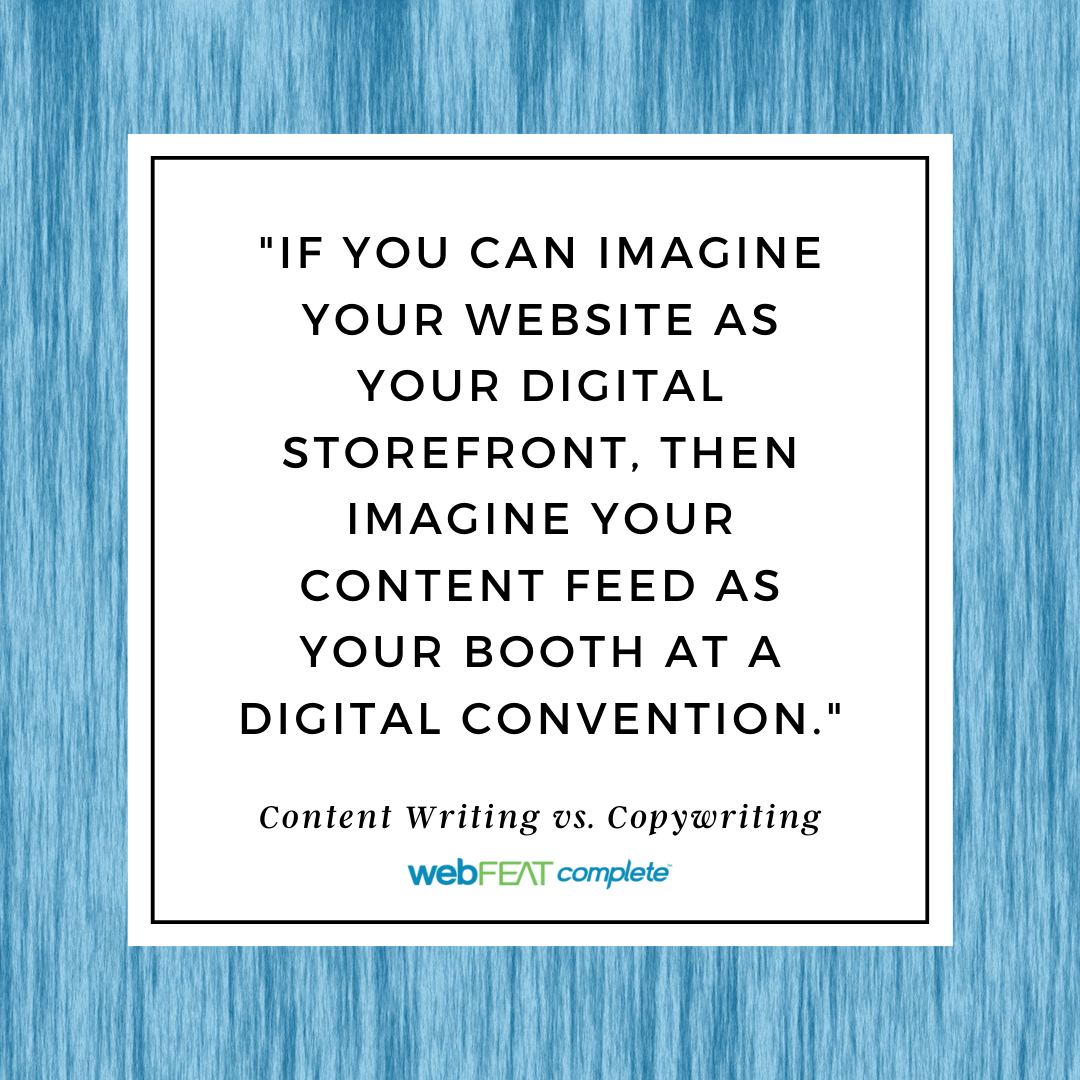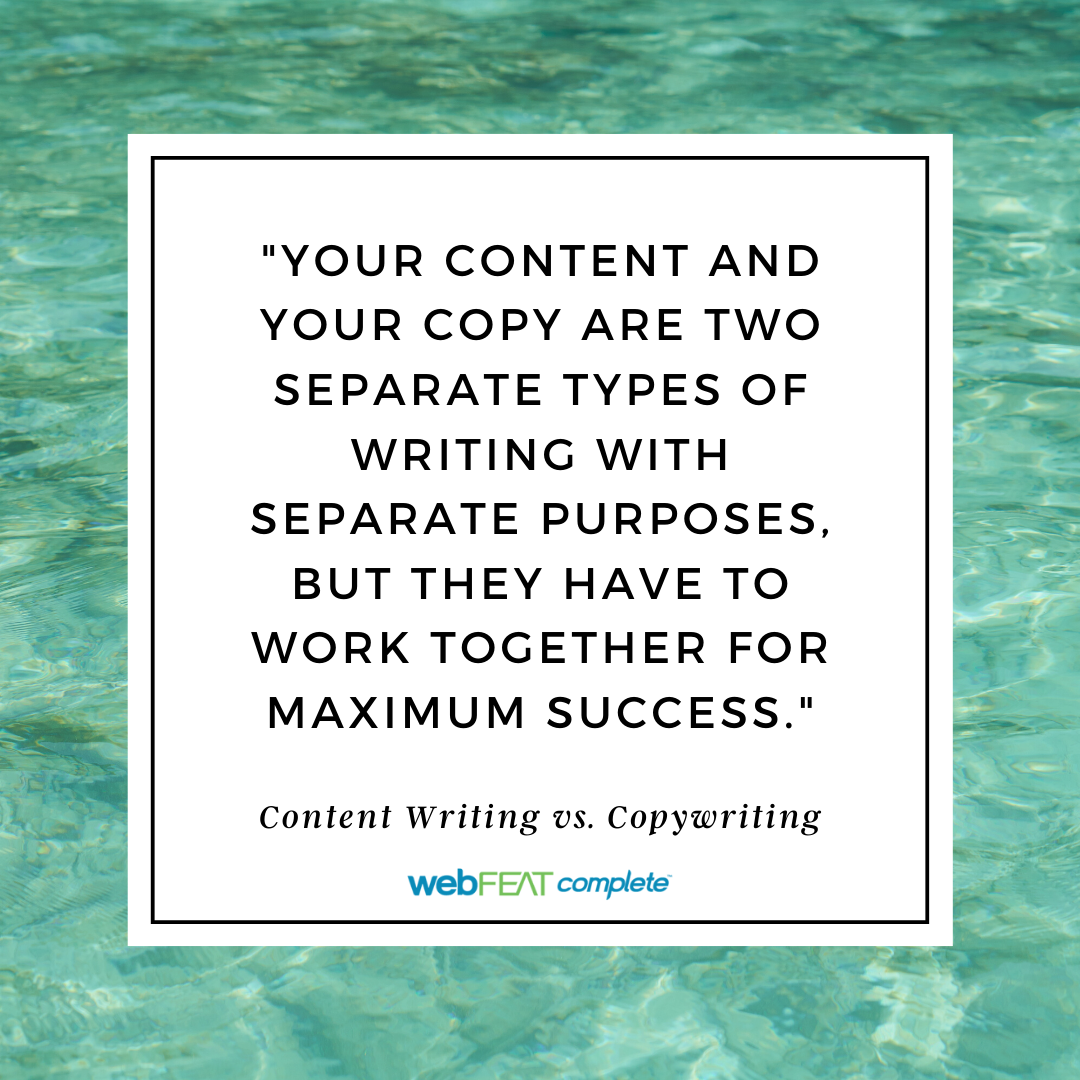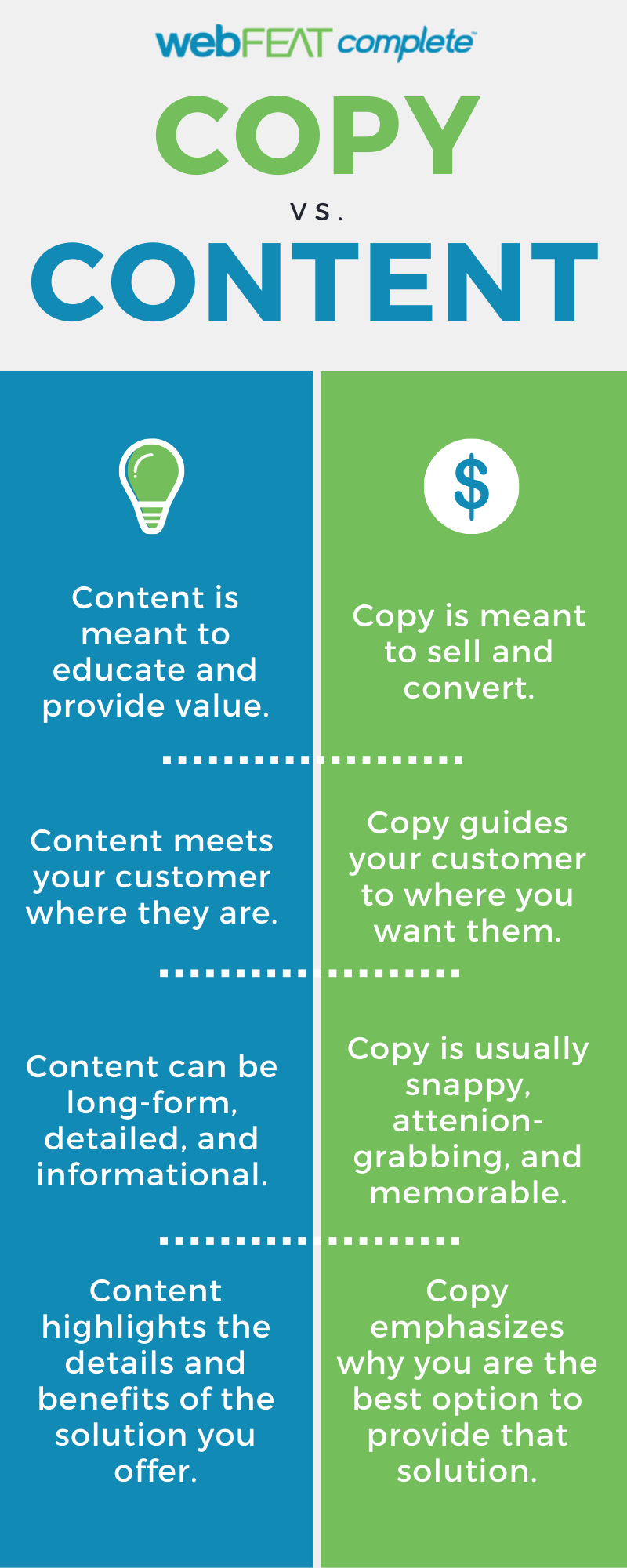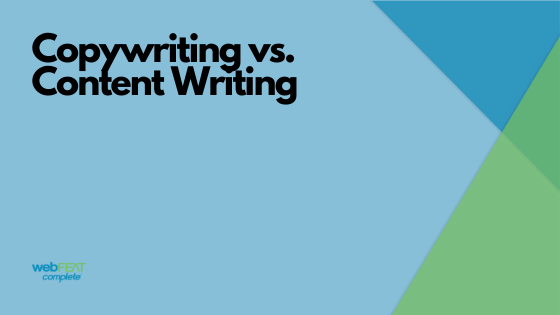What’s the difference between content and copy?
For some reason, digital marketers love to come up with new words and phrases concepts that are only barely different. It can make learning the language of the industry hard, and when business owners in need of a marketing strategy try to enter the conversation, a lot of nuance gets dropped. Unfortunately, this leads to a lot of misunderstanding, and a lot of room for error. One of the most egregious examples of this is content creation and copywriting.
While these concepts overlap a lot, and a content creator and a copywriter have similar jobs, there is a distinction between them.
The short version? Content is meant to educate. Copy is meant to sell. In order to execute an effective digital marketing strategy, you need both, and they need to work together.
Let’s take a deeper look at both concepts, and examine how paying attention to the difference between them could improve your bottom line.
What is content writing?
Content writing, content marketing, content creation… whatever you want to call it, here’s a quick run-down of the facts.
What?
Content is any type of online marketing intended to educate, connect with, and add value to the lives of your potential customers. This might look like a blog, an email, a social media post, an e-book, and infographic… the possibilities are endless.

Who?
ANYONE can write content. You probably write content every day. Send an email explaining your services more in-depth? You’re a content writer. Popped off a tweet? Content.
Now, obviously, content professionals exist. They can execute advanced content creation and distribution strategies to maximize your content’s effectiveness. However, my point is that content writing is not inaccessible. You are almost certainly already dedicating time to content writing, and shifting your approach to be more mindful and strategic is an easy way to see more online success.
Where?
Content is usually outward-facing. It’s your way of occupying digital space that you don’t have control over, like social media feeds and email inboxes.
If you can imagine your website as your digital storefront, then imagine your content channels as your booth at a digital convention. It’s crowded, loud, and people are milling about knowing that they’re mildly interested in what you have to offer, but buying isn’t their first priority. Potential customers drift by your booth, gathering freebies and pamphlets, maybe having a brief conversation with you, and then they move on to someone else to do the same thing.
Like convention attendees, people who might peruse your content are doing so to gather as much info as possible. The key to standing out and being memorable is being genuine, helpful, and providing accurate, specific information.
When?
Respected marketing authority Hubspot has asserted that digital marketing is no longer accurately represented by the traditional sales funnel. Their Sales Flywheel is the modern take on this process.

While one can argue that there is a place for content writing in all phases of this flywheel, it is most commonly found in the “attract” stage. Your content should answer the questions your potential customer has, and speak to their wants and needs in a way that makes them curious about you.
Why?
Why focus on content writing? Because like I mentioned above, you’re probably already doing it! It’s almost impossible to do business in the online space without creating some kind of content, so you might as well put some intention behind it. Content writing attracts potential customers, improves your online reputation, and establishes you as a trustworthy and knowledgeable authority in your industry.
What is copywriting?
Web copywriting has evolved from ad copywriting—think Mad Men—but due to the nature of the online environment, there are many key differences.
What?
Copywriting is the writing on the pages of your website, or the writing on ads that take folks directly to your website. It’s the calls to action, the product descriptions, the snappy sentences on ads. Copywriting has one job–sell. The copy on your website should guide a visitor towards a conversion action.
That could look like many different things depending on the type of business you run. If you’re an e-commerce store, the copywriting on your website should introduce visitors to your products, entice them with relevant offers, lead them to a shopping cart page, and make it as easy as possible for them to hit “CHECKOUT.” If you’re a service provider that quotes services before the sale, your copy should do all of the above and then convince someone to request a quote or schedule a consultation.

Who?
When designing a new website, you should seek a professional copywriter to ensure that the words on the page are doing their jobs, and that’s not a simple task. Gone are the days where your Services page just described your services, or your About page just described your professional background. Every single page on your website should be working to convert visitors.
Where?
Copywriting is inward. It’s the writing that happens in the environment that you control: your website, your territory. One of the most difficult things to achieve when developing an effective online presence is making sure that your business appears customer-focused while still promoting itself. As I already established, the content you’re distributing should be addressing customer problems, and building trust by not pushing to make a sale. But once someone has found their way to your website, it’s completely appropriate to show yourself off while still addressing customer needs.
For example, say you’re a piano teacher. You know that your target audience is parents of young children who are looking for an after school activity. Your content and your copy would address this need in different ways. When writing content, you could write about how music lessons are a great after school activity because music encourages rapid brain development and creativity. When writing copy for your website, you would write about how piano lessons from you are a great after school activity, because you’re an experienced teacher who keeps students engaged with your unique teaching methods that you developed from your impressive background.
When?
In the Flywheel graphic from Hubspot mentioned above, content writing was in the “Attract” phase. Ideally, now that your content has attracted visitors to your site, your copywriting can now “Engage” them. Going back to our storefront/convention metaphor, the pamphlet you handed out at your convention worked, and now someone has come to visit your location.
Why?
It doesn’t make sense to invest in a content strategy if you have bad copywriting on your website. If you’re putting time and effort into attracting visitors to your site but then missing out on the opportunity to sell to them, you might wrongly put the blame on your content strategy. Info-driven content writing prepares potential customers for your sales-driven copy. Content alone won’t make someone convert, but copy alone doesn’t establish the trust needed to get someone to buy from you. It’s important to understand that your content and your copy are two separate types of writing with separate purposes, but they have to work together for maximum success.
To help you further understand the difference between these two concepts, here’s a handy dandy info-graphic:

“”

